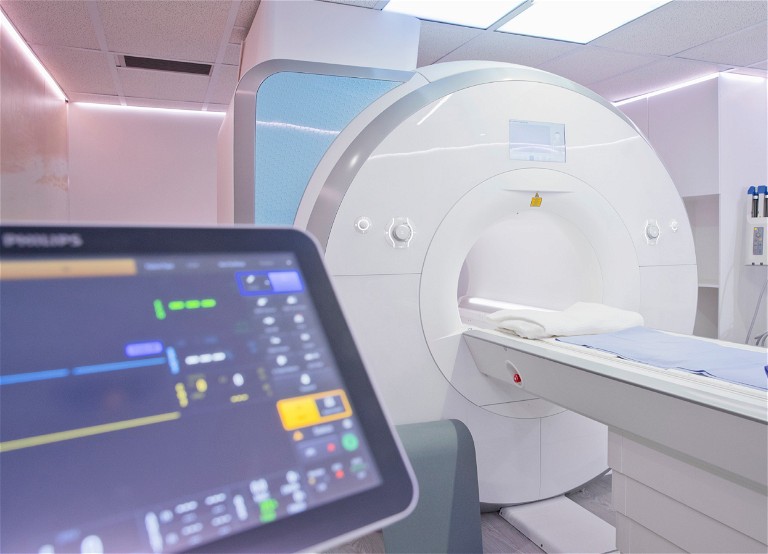CONTENTS
Manufacturing

6. Why manufacturers can rely on robots to bridge efficiency gaps and streamline processes
Robots are revolutionising manufacturing, but manual programming hampers their potential. Robot offline programming (OLP) offers a digital solution, reducing human work hours by up to 80% and ensuring swift task readiness.

12. The early screening imperative: the key role of in vitro diagnostic products
In the post-COVID era, healthcare grapples with staff shortages and treatment delays, emphasising the need for early diagnosis. While regulatory changes pose challenges, EU extensions provide relief.
14. Peptide therapeutics: reconstructing protein surfaces using constrained peptides
Proteins govern crucial biological processes, making PPIs vital for understanding and treating diseases. Peptide-based mimics offer tailored therapeutic approaches, yet optimising their efficacy poses challenges.
22. The six keys to client satisfaction in biologics CDMO services
In the UK, one in 50 adults is living with a chronic wound, leading to more than £8bn in healthcare costs in 2017/2018.1 However, these numbers are likely to be higher since the pandemic as a result of reduced care in 2020 and 2021, impacting patient outcomes.
Microscopy

26. The RMS is very proud to be hosting elmi2024, taking place in Liverpool, UK, from 4-7 June
With a blockbuster scientific programme, world-class exhibition, ‘hands-on’ workshops and more, the annual meeting has come to be regarded as an essential event for the light microscopy community.
Discovery & Development

28. Advancements in preclinical imaging: a look into the future of drug development
IPT talks with Jacob Tesdorpf at Revvity about the recent developments in preclinical imaging, from AI-enhanced analysis to refined disease models.
30. Non-viral gene therapies: GETting growth-factor-based healing right in orthopaedics
With the advent of innovative technologies using improved tropism and safer viral-based systems and nanotechnology advancing non-viral delivery of nucleic acid vectors, there will be more gene-based products entering the market in near future.
Analytics
36. A quality boost from mass spectrometry for fermentation processes
Thermo Fisher Scientific discusses the role of Process Analytical Technology in addressing the process challenges concerning fermentation and cell culture in biotechnology and enhancing quality and speed production.
40. Technological advances in MALDI imaging and spatial proteomics for medical research
Recent advancements in MALDI mass spectrometry imaging are transforming disease understanding and treatment.
Regulars
5. Editorial Desk
In this issue, we bring you a fresh wave of insights into the latest developments in the fields of in vitro diagnostics, peptide therapeutics, gene therapy and more!
45. Events
IPT's events page highlights the best upcoming pharma events of the season.
EXECUTIVE DIRECTOR
PMGroup Worldwide Ltd
Karl Equi
GROUP MANAGING EDITOR
PMGroup Worldwide Ltd
Iona Everson
DEPUTY EDITORS
Charlie Blackie-Kelly
James Spargo
EDITORIAL ASSISTANTS
Nassima Alloueche
Betsy Goodfellow
SALES
Louise Wilson-English
DESIGN
Peter May
FRONT COVER
Shutterstock
DIGITAL EDITION
IPT Online
www.iptonline.com
CONTACT US
Tel: +44 (0)20 7724 3456
Fax: +44 (0)20 7403 7747
PRINTING
Pureprint Group
www.pureprint.com
SUBSCRIPTIONS AND DATA
Curwood CMS Ltd
Unit 9 Barns & Stables,
Timworth Green,
IP31 1HS
c-cms.com
Tel: 01580 883841
Email: enquiries@c-cms.com
www.iptonline.com
Innovations in Pharmaceutical Technology (ISSN: 1471-7204, USPS No: 025082) is published four times a year – March, June, September, and December – by Samedan Ltd.
The opinions and views expressed by the authors in this book are not necessarily those of the Editor the Publisher and, while every care has been taken in the preparation of the book, the Editor and the Publisher are not responsible for such opinions and views or for
any inaccuracies in the articles.
The Publisher is not responsible for any images supplied by contributors. While every care is taken with artwork supplied, the Publisher cannot be held responsible for any loss or damage incurred.
The entire content of this publication is protected by copyright. No part of this publication may be reproduced, stored in a retrieval system, or transmitted in any form, by any means – electronic,
mechanical, photocopying, or otherwise – without the prior permission of the Publisher.
© 2023 Samedan Ltd
Pharmaceutical Publishers
Be sure to read our other publications...





